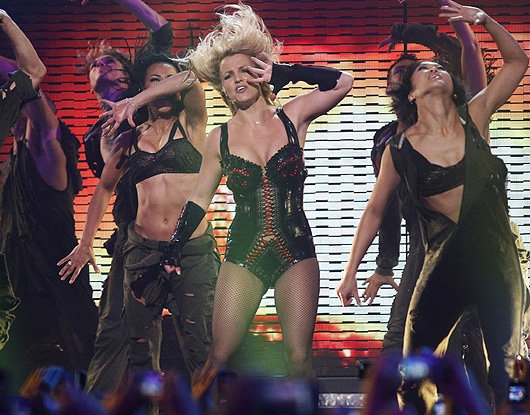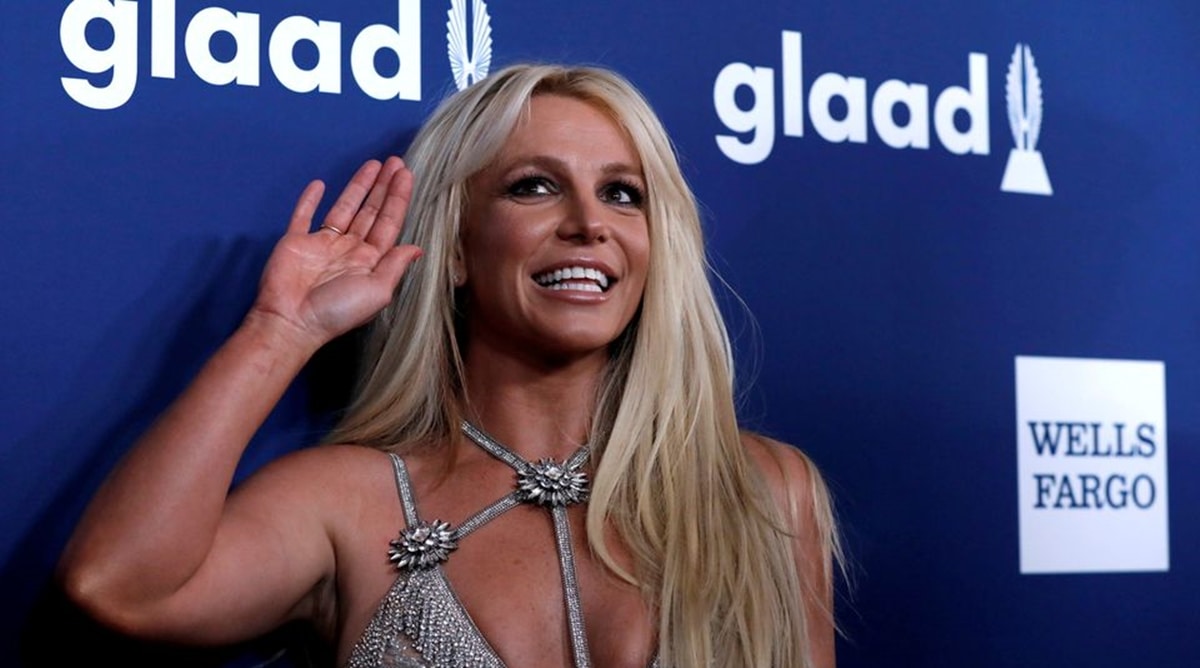Ball Room Dance to Brittney Spears
When Britney Spears spoke out in June during a hearing in Los Angeles Superior Courtroom, she talked well-nigh how those in charge of her conservatorship had strictly governed her life for 13 years, calling the arrangement "abusive." Only she also emphasized ane fashion she had held on to some control.
She kept on dancing.
She "really did most of the choreography," she said, referring to 2018 rehearsals for her later scuttled "Britney: Domination" residency in Las Vegas, "meaning I taught my dancers my new choreography myself."
There was "tons of video" of these rehearsals online, she said, adding: "I wasn't skillful — I was nifty."
It was a powerful manner of reminding those listening of the confidence she conveyed as a performer throughout her career. Onstage, Spears maintained control over her body, otherwise the discipline of constant scrutiny — about her virginity, her weight, her wardrobe. Through movement, she conjured a world of her ain making in which she really was the dominate.
 Vocalizer Britney Spears performs on ABC'due south "Skilful Morning time America" at Bill Graham Civic Auditorium in San Francisco, California March 27, 2011. (Photo: REUTERS)
Vocalizer Britney Spears performs on ABC'due south "Skilful Morning time America" at Bill Graham Civic Auditorium in San Francisco, California March 27, 2011. (Photo: REUTERS)
With her expansive arm gestures, rapid-burn down turns and abdominal dexterity, Spears has always used dance to communicate her strength. Brian Friedman, the choreographer responsible for some of Spears' most famous routines, noted that there was a visible change in her approach to dancing afterwards the conservatorship was put in place in 2008.
"I feel similar that was her way of being able to exist in control of something, because she didn't have control over so much," Friedman said in a telephone interview. "So by existence able to footstep into the studio and say 'I don't want to practice this, I want to do this, I'one thousand going to make up my ain thing,' it gave her some kind of power."
When Spears appear "an indefinite work hiatus" in early on 2019, she began posting videos of herself dancing to Instagram. Nigh of these clips testify her twirling alone, in a loose, visibly improvised style, on the marble floor of her California home.
For dancers and choreographers who have worked with Spears, her Instagram's focus on dance made sense. "In a flow of time when she did non accept liberty, that gave her freedom," Friedman said.
Sharing her improvised dance sessions also immune her to connect directly with fans. Brooke Lipton, who danced with Spears from 2001-08, said in a phone interview that Spears' "dancing told the world she needed help — without saying anything, because she couldn't."
If Spears can still show off the occasional fouetté turns, in which she spins on one leg, it'due south because of a lifetime training in the dance studio. Lipton, Friedman and others say Spears matched the range and commitment of professional dancers, with a preternatural knack for picking up choreography on the fly.
"She grew up dancing," said Tania Baron, who started performing at shopping malls with the budding star in 1998. "There are artists who dance certain parts of a bear witness. There are artists who are just natural movers. So you lot've got people like Britney, who tin actually trip the light fantastic toe only similar her dancers."
 Britney Spears has been freed from conservatorship. (Photo: Reuters)
Britney Spears has been freed from conservatorship. (Photo: Reuters)
Spears' intendance and attending to how she presented herself in motility speak to how she understood her body every bit a dancer does — every bit an artistic instrument. Top-level choreographers might have been creating dances for her, just they were also working for other pop stars. The difference, Elizabeth Bergman, a scholar of commercial dance, said in a telephone interview, is "the way she's doing them."
In the years earlier the conservatorship, Spears advisedly chose the choreographers she worked with. Valerie Moise, also known as Raistalla, who danced in Spears' concerts and videos in 2008 and 2009, points out that these collaborations contributed to the long-standing popularity of jazz funk, known for its defiant, hard-hitting moves.
"This is a style that is almost like a culture to her," Moise said in a phone interview. "Information technology accentuates how she wants to limited herself."
And Spears did something more than than simply continue in the tradition of the pop artists who danced before her.
"Of course in that location was Madonna, and Michael and Janet, and they were fantastic," Lipton said. "Just trip the light fantastic was also evolving at a time when Wade and Brian were stepping up the expectations of what dancers could practise," she added, referring to Spears' frequent choreographers, Wade Robson and Friedman. Their routines were faster than those of the previous generation, with more motility and activity per beat. "Every count was being filled," Lipton said.
Coming up in an industry known for its bamboozlement, Spears used dance as a means of transparency with fans. Everyone knows there is no such matter as dance-syncing.
"That was truly how she communicated as an artist," Friedman said. Fifty-fifty before the start of Spears' conservatorship, he added, "she couldn't really say everything she wanted in public, in interviews. Simply when she danced, it was unapologetic."
Spears' songs became coming-of-age and coming-out anthems, and learning her moves enabled fans to explore aspects of their identities with the same boldness she projected with her body. Imitating her performances allowed them to "feel the spirit of Britney," as Jack says on the TV show "Will & Grace," later on doing the shoulder lifts and arm pumps that are part of the routine to "Oops! … I Did Information technology Again."
Lipton emphasizes that Spears chose her steps and so that anyone watching could movement along with her.
"She would do the choreography merely a footling bit less," Lipton said. "In a moment where nosotros're doing all of these turns and slams, she just smiles and points her fingers out, before joining dorsum in. It wasn't unattainable."
Friedman says Spears' dancing was well-nigh her artistry, not manufactured sex appeal.
"As Britney'due south choreographer for many years, I never ready out to make movements to pleasure anyone else," he said. "Information technology was about how I could make her feel empowered in her body."
In the 2008 documentary "Britney: For the Record," filmed in the early days of the conservatorship, Spears speaks as if already aware of how important dance would become for her under the control of others.
"Dancing is a huge part of me and who I am. It'south like something that my spirit just has to do," she says. "I'd be expressionless without dancing."
Arguing for the conservatorship's termination thirteen years after, she identified one of her breaking points as the moment when she was refused the right even to this control over her body. Spears said that at a dance rehearsal in early on 2019, after maxim that she wanted to modify a footstep in the choreography, she was informed that she was not cooperating.
She declared her response firmly in court: "I can say no to a dance move."
Source: https://indianexpress.com/article/entertainment/music/britney-spears-has-always-fought-back-by-dancing-7711893/
0 Response to "Ball Room Dance to Brittney Spears"
Post a Comment